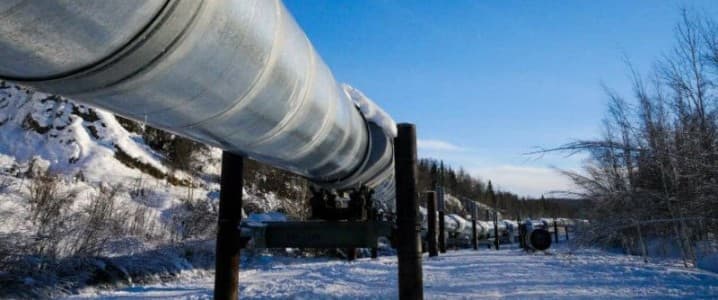Previously, we reported that the pivot by Indian refiners away from Russian oil has triggered a spike in oil product prices even as crude prices remain largely unchanged. To wit, ICE Brent-Gasoil crack spreads doubled from the $15-17/bbl range held in the first half of the year, to a 21-month high above $32/bbl, good for a nearly 70% increase in the year-to-date. Gasoil is a middle distillate mainly used in commercial and agricultural sectors for off-road vehicles, machinery, and generators. And now reports have emerged that the distillates market continues to tighten even as crude prices remain weak. According to new data by the Energy Information Administration (EIA), gasoline inventories clocked in at 205.06 million barrels (mb) for the week ending 7th November, 8.2mb lower than the five-year average and the lowest level in 12 years.
U.S. distillate inventories were 110.91 million barrels, 9.3mb below the five-year average and close to the bottom of their five-year range. U.S. distillate inventories are now at the lowest level since mid-July as we move into the high-demand winter season, which should continue to support product strength. Meanwhile, strength in product cracks continues, with the ICE gasoil-Brent crack now exceeding $34 per barrel (bbl), the highest level since September 2023. The price differential has now stayed above $30/bbl for 10 trading days.
Oil markets, on the other hand, continue to be weak and dominated by bearish supply sentiment, with recent Ukrainian attacks on Russian energy infrastructure failing to give oil prices a significant boost. Brent crude for December delivery was trading at $63.32/bbl at 12 pm ET on Wednesday, less than a dollar higher from a week ago, while the corresponding WTI contract was changing hands at $59.28/bbl, up from $58.26/bbl seven days ago. Last week, the port of Novorossiysk, in Krasnodar Krai, was targeted by Ukrainian missiles and drones, with a focus on the Sheskharis oil terminal. The giant terminal has an export capacity of ~2.2 million barrels per day (mb/d), and loadings were suspended for two days. Ukraine’s attacks on Russia’s Black Sea export terminals have, however, highlighted the vulnerability of exports via the southern route.
Related: A Trend Break? EIA Sees Jump in Alaska Oil Production in 2026
According to commodity analysts at Standard Chartered, this is particularly important, with the weather closing down the Northern Sea Route via the Arctic over the winter. The winter transit routes to Asia will then be limited to the Suez Canal, taking 10 days longer on average. These longer transit routes have contributed to a 294 million barrels Y/Y surge in seaborne crude to an all-time high of 1.37 billion barrels as of 14 November. Russian crude exports have, however, remained relatively steady, although StanChart has predicted they will slow down sharply after the November 21 deadline for sanctions on Lukoil and Rosneft kicks in. The sanctions could also be contributing to the large increase in volumes of oil on water.
U.S. natural gas prices remain elevated, with Henry Hub gas quoted at $4.55/MMBtu in Wednesday’s session, nearly double in the year-to-date. Expectations of high demand have been driving prices higher, despite inventories remaining elevated. Surging demand for liquefied natural gas (LNG) exports, increased domestic power needs from factors like data centers, and strong heating demand have helped prop U.S. gas prices. Meanwhile, production growth has not kept pace with this escalating demand. The production backlog for utility-scale gas turbines has pushed back equipment delivery dates, further straining the supply-demand balance.
In contrast, Europe’s gas prices remain depressed, with TFF natural gas futures falling close to an 18-month low at $30.870/MW, with warmer weather expected to lower heating demand. European natural gas inventories have been declining as the continent moves through the shoulder season into prolonged net withdrawals. According to Gas Infrastructure Europe (GIE), Europe’s gas inventories stood at 95.784 billion cubic metres (bcm) on 17 November, above the mandatory 90% storage target set for November 1st.
The relatively high level is a positive sign for meeting winter demand, as it can supply up to one-third of the EU’s annual gas consumption. Weather patterns across north-west Europe have pushed temperatures sharply lower; however, they remain supportive of renewable power generation, with high pressure supporting solar and wind, rather than the dreaded ‘dunkelflaute’ conditions that can be seasonally prevalent. This, in part, has dampened European natural gas prices.
Dunkelflaute is a German term describing a period of low wind and solar power generation, often occurring in winter. During these times, which can last for hours or days, there is little to no wind, and cloud cover prevents solar panels from producing much electricity. This phenomenon poses challenges for electricity grids that rely heavily on renewables because energy demand, particularly for heating, is often high.
By Alex Kimani for Oilprice.com
More Top Reads From Oilprice.com

